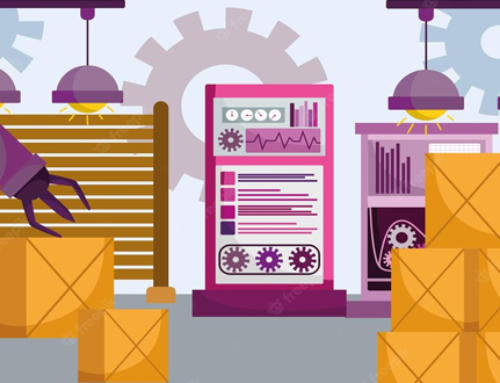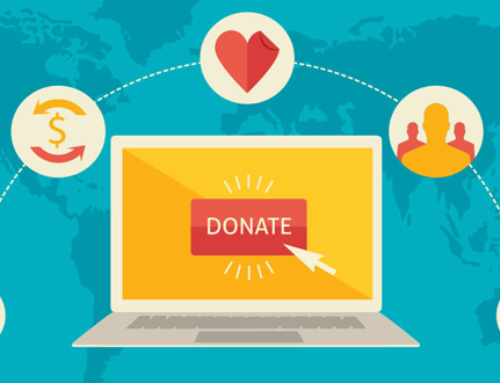Introduction: Navigating the Digital Frontier in Healthcare
The healthcare landscape is undergoing a paradigm shift driven by the unstoppable force of digital technology. This transformation, often referred to as digital health, is revolutionizing the way we access, manage, and deliver healthcare services. This introduction delves into the pivotal role of Doctors’ web applications in this exciting new era, highlighting their contribution to reshaping patient care and fostering a more patient-centric approach.
Unveiling the Journey of Healthcare into the Digital Era:
Traditionally, healthcare has been characterized by physical interactions between patients and healthcare providers. However, the digital revolution has introduced a plethora of innovative tools and technologies, transforming the way healthcare is delivered and experienced. This includes:
- Electronic Health Records (EHRs): Digitizing patient medical records, making them accessible and secure for authorized healthcare professionals, enabling better care coordination and collaboration.
- Telemedicine: Utilizing technology to facilitate virtual consultations between patients and healthcare providers, improving access to care for individuals in remote areas or with limited mobility.
- Wearable Devices: Monitoring vital signs and other health data in real-time, empowering patients to take a more active role in their health management.
- Healthcare Apps: Providing a range of functionalities such as appointment scheduling, medication reminders, and educational resources, promoting patient engagement and self-care.
This digitalization journey unlocks numerous benefits for both patients and healthcare providers, including:
- Improved accessibility and convenience: Allowing patients to access healthcare services at their fingertips, eliminating geographical barriers and long wait times.
- Enhanced communication and collaboration: Facilitating seamless communication between patients, doctors, and other healthcare professionals, fostering better care coordination.
- Empowered patients and personalized care: Providing patients with tools and resources to take ownership of their health, enabling personalized care plans and informed decision-making.
- Increased efficiency and cost-effectiveness: Optimizing workflows, reducing administrative burdens, and improving resource utilization within the healthcare system.
The Pivotal Role of Doctors’ Web Applications:
Amidst this digital transformation, Doctors’ web applications emerge as powerful tools for both healthcare providers and patients. These platforms offer a comprehensive suite of functionalities, including:
- Online appointment booking: Streamlining the scheduling process, allowing patients to book appointments at their convenience.
- Secure patient communication: Facilitating secure communication between patients and doctors through messaging features, online consultations, and virtual follow-ups.
- Electronic health record access: Providing patients with controlled access to their medical records, empowering them to understand their health history and participate actively in their care.
- Prescription refills and medication management: Allowing patients to request prescription refills and manage their medications electronically, improving adherence and convenience.
- Educational resources and health information: Providing patients with access to reliable and up-to-date health information, promoting health literacy and informed decision-making.
By leveraging Doctors’ web applications, healthcare providers can:
- Improve efficiency and productivity: Streamline administrative tasks, manage appointments more effectively, and dedicate more time to patient interaction and care.
- Enhance patient engagement and satisfaction: Offer patients greater control over their healthcare journey and foster a more collaborative relationship with their doctors.
- Expand reach and accessibility: Cater to patients in remote locations or with limited mobility, offering a convenient and accessible solution for healthcare access.
In conclusion, Doctors’ web applications play a critical role in shaping the future of healthcare. These platforms empower patient-centric care, promoting improved accessibility, communication, and collaboration within the healthcare ecosystem. As technology continues to evolve, these applications will undoubtedly continue to transform the way healthcare is delivered and experienced.

Revolutionizing Patient Interaction Through Doctors Web Applications
Doctors’ web applications are not simply digital tools; they are catalysts for a paradigm shift in patient interaction. This section delves into their potential to redefine the patient experience through seamless onboarding and engagement, while simultaneously unleashing the potential of telemedicine for a new era of remote healthcare.
Seamless Patient Onboarding and Engagement:
- Redefining the Patient Experience from the First Interaction:
Traditional patient onboarding often involves lengthy paperwork, phone calls, and waiting in line. Doctors’ web applications can revolutionize this process by offering:
- Intuitive registration: Streamlined online registration forms that collect essential information efficiently and securely.
- Self-service options: Empowering patients to schedule appointments, update profiles, and access medical records independently.
- Personalized welcome messages: Tailored welcome emails or messages introducing the platform and its functionalities.
These features enhance the first impression and ensure a positive user experience from the outset.
- Implementing Features for Ongoing Patient Engagement:
Beyond onboarding, Doctors’ web applications can foster continuous patient engagement through:
- Secure messaging: Facilitating secure communication between patients and doctors, allowing for convenient inquiries, non-urgent concerns, and follow-up discussions.
- Educational resources: Providing patients with access to reliable and evidence-based health information, promoting health literacy and informed decision-making.
- Medication management tools: Offering features to refill prescriptions, set medication reminders, and track adherence, promoting responsible medication use.
- Appointment reminders and online scheduling: Sending automated appointment reminders and facilitating online appointment scheduling, reducing missed appointments and improving patient convenience.
- Interactive health assessments: Including online surveys or questionnaires to monitor patient health status, identify potential risks, and personalize care plans.
By incorporating these features, Doctors’ web applications can transform patients from passive recipients of care into active participants in their health journey.
Telemedicine Unleashed: A New Era of Remote Healthcare:
- Expanding Healthcare Access through Virtual Consultations:
Telemedicine allows doctors and patients to interact virtually using video conferencing technology. Doctors’ web applications can integrate telemedicine features, expanding healthcare access to:
- Patients in remote locations: Individuals residing in geographically isolated areas or lacking nearby healthcare facilities can access specialist care remotely.
- Individuals with mobility limitations: Patients with physical limitations or transportation difficulties can conveniently consult their doctor from home.
- Those with busy schedules: Working professionals or individuals with limited time can schedule virtual consultations outside traditional clinic hours.
This increased accessibility ensures that timely and convenient healthcare is no longer a privilege, but a reality for a wider population.
- Ensuring a Secure and User-Friendly Telemedicine Experience:
For successful telemedicine integration, Doctors’ web applications must prioritize:
- Security and privacy: Implementing robust security measures to ensure patient data and confidential conversations remain protected.
- User-friendly interface: Designing an intuitive video conferencing interface that is accessible to users with varying levels of tech-savviness.
- High-quality audio and video: Utilizing reliable technology to ensure clear communication and a seamless virtual consultation experience.
By addressing these concerns, Doctors’ web applications can unlock the full potential of telemedicine, redefining patient care and facilitating convenient, accessible, and personalized healthcare experiences for all.
In conclusion, Doctors’ web applications are poised to revolutionize patient interaction. By streamlining onboarding, fostering engagement, and integrating telemedicine, these platforms empower patients, expand healthcare access, and pave the way for a more convenient, efficient, and patient-centric healthcare future.
Empowering Doctors: Tools for Efficient Practice Management

Doctors’ web applications extend their impact beyond patient interaction, empowering healthcare providers with a suite of tools to enhance practice management and improve efficiency. This section explores how these applications can unlock the power of Electronic Health Records (EHR), digitize medication management, and streamline financial workflows.
Unlocking the Power of Electronic Health Records (EHR):
- Streamlining Patient Information Management with EHR:
Traditional paper-based medical records are cumbersome, time-consuming, and prone to errors. Doctors’ web applications integrated with EHR systems offer:
- Centralized patient data storage: Securely store and manage patient medical history, allergies, medications, and past consultations in one centralized location.
- Improved accessibility: Access patient records instantly from any authorized device, eliminating the need for physical file retrieval.
- Enhanced note-taking and documentation: Utilize templates and features to efficiently document patient encounters, improving accuracy and completeness.
These features save doctors valuable time and effort, allowing them to focus on providing quality patient care.
- Ensuring Data Security and Accessibility for Healthcare Providers:
EHR systems within Doctors’ web applications prioritize:
- Robust data security: Employing encryption, access controls, and regular backups to safeguard sensitive patient information.
- Data compliance: Adhering to relevant data privacy regulations and ensuring patient data is handled responsibly.
- Role-based access control: Granting different levels of access to authorized healthcare personnel based on their individual roles and responsibilities.
By addressing these concerns, Doctors’ web applications provide secure and reliable access to patient data, crucial for informed decision-making and effective care delivery.
Precision Prescriptions: Digitizing Medication Management:
- Enhancing Prescription Processes for Accuracy and Convenience:
Doctors’ web applications can transform medication management through:
- Electronic prescribing: Issue prescriptions electronically, eliminating handwritten errors and streamlining communication with pharmacies.
- Drug interaction checking: Utilize integrated databases to verify medication compatibility and avoid potential adverse reactions.
- Dosage and refill reminders: Send automated reminders to patients to ensure adherence to medication schedules and facilitate timely refills.
These features enhance accuracy and reduce the risk of medication errors, contributing to better patient care outcomes.
- Integrating Databases for Informed Decision-Making:
The integration of drug databases and clinical decision support systems within Doctors’ web applications empowers healthcare providers with:
- Up-to-date drug information: Access comprehensive information on medications, including indications, dosages, side effects, and potential interactions.
- Evidence-based recommendations: Leverage clinical decision support tools to receive evidence-based guidance on medication selection and treatment plans.
- Personalized treatment approaches: Tailor medication regimens based on individual patient factors and risk profiles.
This access to comprehensive information and decision-making support allows doctors to prescribe medications with greater confidence and personalized care.
Financial Harmony: Billing and Insurance Processing Solutions:
- Simplifying Billing Workflows for Healthcare Providers:
Administrative tasks like billing and insurance processing often occupy a significant portion of a doctor’s time. Doctors’ web applications can streamline these processes by:
- Automated billing systems: Generate and submit claims electronically to insurance companies, reducing manual entry errors and expediting reimbursement.
- Integrated payment processing: Offer patients secure online payment options, improving cash flow and eliminating the need for paper checks.
- Patient billing statements: Generate clear and concise patient statements, promoting transparency and facilitating timely payments.
These functionalities free up valuable doctor time and improve practice efficiency, allowing them to focus on delivering quality patient care.
- Integrating Insurance Processing for Seamless Financial Transactions:
Doctors’ web applications can integrate with insurance databases to:
- Verify patient insurance coverage: Instantly verify patient insurance eligibility and coverage details, ensuring accurate billing.
- Pre-authorization requests: Streamline the process of submitting pre-authorization requests for specific procedures or medications, eliminating delays and ensuring proper coverage.
- Track claim status: Monitor the status of submitted claims in real-time, allowing proactive communication with insurance companies and prompt resolution of any issues.
This seamless integration with insurance systems simplifies financial workflows, reduces administrative burdens, and ensures doctors receive timely and accurate reimbursements.
In conclusion, Doctors’ web applications empower healthcare providers by streamlining patient information management, digitizing medication management, and simplifying financial workflows. These tools contribute to improved efficiency, enhanced practice management, and ultimately, better patient care. With continuous development and integration, Doctors’ web applications are poised to play a vital role in the future of efficient and effective healthcare delivery.
Innovative Frontiers: Cutting-Edge Technologies in Doctors’ Web Applications

The evolution of Doctors’ web applications extends beyond current functionalities, venturing into the exciting realm of emerging technologies. This section explores the transformative potential of Artificial Intelligence (AI) and blockchain in shaping the future of these platforms.
AI Healers: Transformative Impact of Artificial Intelligence:
- Harnessing AI for Diagnostics and Predictive Analytics:
AI algorithms have the potential to revolutionize diagnostics and predictive healthcare within Doctors’ web applications by:
- Analyzing patient data: Utilizing vast datasets of medical records and research to identify patterns and potential health risks.
- Supporting diagnosis: Assisting doctors in diagnosing complex medical conditions by analyzing medical images, identifying abnormalities, and suggesting potential diagnoses.
- Predicting health outcomes: Leveraging predictive analytics to identify individuals at risk of developing specific diseases, allowing for early intervention and preventive measures.
These AI-powered features can enhance the accuracy and efficiency of diagnoses, leading to improved patient outcomes and early detection of potential health issues.
- Enabling Data-Driven Decision-Making for Doctors:
Doctors’ web applications integrated with AI can empower doctors by:
- Providing insights and recommendations: Offering real-time insights and evidence-based recommendations based on analyzed patient data and medical literature.
- Optimizing treatment plans: Assisting in tailoring treatment plans based on individual patient factors and predicted health outcomes.
- Reducing medical errors: Minimizing the risk of human error by highlighting potential drug interactions and providing alerts for potential adverse reactions.
By leveraging AI, Doctors’ web applications can transform healthcare professionals from sole decision-makers to informed partners collaborating with technology to deliver personalized and data-driven healthcare.
Blockchain Armor: Fortifying Health Data Security:
- Applying Blockchain for Secure Health Data Exchange:
Blockchain technology, known for its secure data management capabilities, holds immense potential for Doctors’ web applications by:
- Creating a decentralized and secure ledger: Securely storing and sharing patient health data across different healthcare providers and institutions.
- Ensuring data immutability: Guaranteeing that data stored on the blockchain cannot be tampered with or altered, safeguarding patient privacy and data integrity.
- Empowering patients: Granting patients greater control over their health data, allowing them to decide who can access it and for what purposes.
This decentralized and secure data management offered by blockchain can revolutionize patient data security and empower individuals to take greater control of their health information.
- Ensuring Transparency and Integrity in Healthcare Information:
Blockchain integration within Doctors’ web applications can foster:
- Improved transparency: Enabling patients to track their health data access and usage, promoting transparency and trust in the healthcare system.
- Enhanced collaboration: Facilitating secure and efficient data exchange between healthcare providers, leading to improved care coordination and informed decision-making.
- Reduced fraud and errors: Minimizing the risk of data breaches and fraudulent activities by ensuring the immutability and traceability of health information.
By fostering transparency and ensuring data integrity, blockchain technology can contribute to a more secure, efficient, and trustworthy healthcare ecosystem.
In conclusion, the integration of AI and blockchain into Doctors’ web applications holds immense potential for the future of healthcare. AI can provide valuable insights and support data-driven decision-making, while blockchain can revolutionize data security and empower patients. As these technologies continue to evolve and integrate with healthcare platforms, we can expect a future of personalized, efficient, and secure healthcare for all.
Tackling Challenges: Solutions in Doctors’ Web Application Development
Despite the promising future of Doctors’ web applications, their development and implementation face several significant challenges. This section explores some of the key hurdles and potential solutions.

Harmony in Diversity: Overcoming Interoperability Challenges:
- Navigating Diverse Healthcare Systems for Interoperability:
The healthcare landscape is characterized by diverse healthcare systems and software used by different institutions. This lack of interoperability creates challenges for Doctors’ web applications to:
- Exchange data seamlessly: Integrate and exchange patient data with different healthcare systems, hindering comprehensive patient information access.
- Ensure data integrity: Maintain data accuracy and consistency when transferring data between different platforms, reducing the risk of errors.
- Strategies for Seamless Integration with Existing Medical Infrastructure:
To address these challenges, developers must prioritize:
- Standardized data formats: Utilize standardized data formats like HL7 (Health Level Seven) to facilitate seamless data exchange between different systems.
- Open API integration: Develop open APIs (Application Programming Interfaces) to allow for secure and controlled data exchange with existing medical software.
- Data mapping and translation tools: Implement tools to map and translate data between different formats, ensuring data integrity and consistency.
By prioritizing interoperability, Doctors’ web applications can bridge the gap between diverse systems, enabling a more comprehensive and unified view of patient health data.
Compliance Compass: Guiding the Way Through Healthcare Regulations:
- Adhering to Regulatory Frameworks, including HIPAA:
Doctors’ web applications handle sensitive patient health information, making compliance with healthcare regulations paramount. This includes:
- HIPAA (Health Insurance Portability and Accountability Act): Stringent regulations protecting the privacy and security of patient information.
- Other regional and international data privacy regulations: Adhering to relevant regulations based on the target audience and geographical location.
- Integrating Robust Security Measures to Ensure Compliance:
To ensure compliance and patient data protection, Doctors’ web applications must incorporate:
- Data encryption: Utilizing strong encryption methods to protect patient data at rest and in transit.
- Multi-factor authentication: Implementing multi-factor authentication protocols to verify user identity and restrict unauthorized access.
- Regular security audits and updates: Conducting regular security audits and promptly installing software updates to address vulnerabilities.
By prioritizing adherence to regulations and implementing robust security measures, Doctors’ web applications can foster patient trust and confidence in their data privacy and security practices.
In conclusion, overcoming interoperability challenges and ensuring compliance with healthcare regulations are crucial considerations in Doctors’ web application development. By adopting appropriate strategies and prioritizing patient data security, these platforms can unlock their full potential to revolutionize healthcare delivery and empower both patients and healthcare providers.
Pioneers of Change: Case Studies in Doctors Web Application Success

The potential of Doctors’ web applications is not merely theoretical; numerous success stories exemplify their transformative impact. This section delves into two pioneering examples: Meditech and HealthTap, highlighting their contributions and key takeaways for future endeavors.
Meditech: Redefining Healthcare IT Standards:
- Analyzing Meditech’s Impact on Healthcare IT:
Meditech is a leading provider of Electronic Health Record (EHR) systems and related healthcare IT solutions. Their comprehensive suite of tools has significantly impacted the healthcare IT landscape by:
- Standardizing data capture and exchange: Facilitating smoother data exchange between different healthcare systems, improving interoperability and patient information accessibility.
- Streamlining workflows and enhancing efficiency: Providing healthcare institutions with tools to streamline administrative tasks, improve practice management, and optimize resource utilization.
- Enhancing patient care coordination: Enabling secure communication and collaboration between healthcare providers, leading to improved care coordination and continuity.
Meditech’s success demonstrates the critical role of Doctors’ web applications in modernizing healthcare infrastructure, enhancing efficiency, and ultimately, improving patient care.
- Key Takeaways from Successful Implementation in Healthcare Institutions:
Successful implementations of Meditech solutions underline the importance of:
- Comprehensive user training and support: Providing adequate training and ongoing support to healthcare professionals and staff to ensure effective utilization of the platform.
- Clear communication and collaboration: Fostering collaboration between healthcare institutions, IT teams, and developers to address specific needs and ensure successful integration with existing systems.
- Continuous improvement and adaptation: Regularly evaluating user feedback, identifying areas for improvement, and adapting the platform to evolving needs and technological advancements.
By adhering to these principles, healthcare institutions can leverage Meditech and similar solutions to maximize the potential of Doctors’ web applications.
HealthTap: Bridging Gaps in Patient-Doctor Connectivity:
- Examining HealthTap’s Role in Enhancing Patient-Doctor Interactions:
HealthTap is a leading online platform connecting patients with doctors for virtual consultations and health information. Their platform addresses the growing demand for:
- Increased access to healthcare: Offering patients, particularly those in remote areas or with limited mobility, convenient and accessible healthcare options.
- Empowerment through information: Providing patients with reliable and evidence-based health information, promoting health literacy and informed decision-making.
- Improved communication and engagement: Bridging the gap between patients and doctors by facilitating secure communication and online consultations.
HealthTap’s success highlights the potential of Doctors’ web applications in democratizing healthcare access, empowering patients, and fostering a more collaborative approach to healthcare.
- Insights into Improved Accessibility and Choice for Patients:
The success of HealthTap sheds light on the significance of:
- User-friendly interfaces: Designing intuitive and accessible platform interfaces to cater to users with varying technological skill sets.
- Prioritizing patient privacy and security: Implementing robust security measures to ensure patient data confidentiality and build trust in online platforms.
- Integrating with existing healthcare systems: Exploring ways to integrate with existing healthcare systems to facilitate seamless data exchange and improve continuity of care.
By addressing these considerations, Doctors’ web applications like HealthTap can transform healthcare accessibility, empower patients, and contribute to a more patient-centric healthcare future.
These two case studies demonstrate the diverse applications of Doctors’ web applications and their potential to revolutionize healthcare delivery. As technology continues to evolve and patient needs adapt, Doctors’ web applications are poised to play a pivotal role in shaping a future of accessible, efficient, and patient-centered healthcare for all.
Tomorrow’s Canvas: Future Trends in Doctors’ Web Applications
Doctors’ web applications are constantly evolving, incorporating cutting-edge technologies to further improve healthcare delivery. Here’s a glimpse into some exciting possibilities:
- AI-assisted diagnostics: Advanced AI algorithms integrated within Doctors’ web applications will analyze medical data and imagery, supporting doctors in diagnosis, risk prediction, and personalized treatment planning.
- Wearable healthcare tech integration: Seamlessly integrating with wearable health devices like fitness trackers and smartwatches, these platforms will collect real-time patient health data, enabling continuous monitoring, proactive interventions, and preventive care.
- Personalized treatment plans: Utilizing AI and big data analytics, Doctors’ web applications will generate individualized treatment plans tailored to each patient’s unique health profile and genetic makeup, leading to more effective and targeted interventions.
These future trends unveil a future where Doctors’ web applications transcend simple tools, transforming into comprehensive healthcare platforms empowering patients, enhancing care delivery, and shaping a personalized, data-driven, and future-proof healthcare ecosystem for all.
Conclusion
In the ever-evolving landscape of healthcare, Doctors Web Applications stand as architects of a future where technology intertwines seamlessly with the art of healing. As we navigate this transformative journey, it becomes clear that these applications are not merely tools; they are enablers of holistic healthcare, redefining patient experiences and reshaping medical practices.
The amalgamation of patient-centric features, from seamless onboarding to virtual consultations, exemplifies a paradigm shift towards more accessible and personalized care. Doctors, equipped with electronic health records and precision prescription tools, are empowered to navigate a data-driven landscape that prioritizes accuracy and efficiency.
In the realm of innovation, artificial intelligence and blockchain emerge as trailblazers, promising not just efficiency but a revolution in diagnostics, security, and transparency. Overcoming challenges in interoperability and compliance, Doctors Web Applications emerge triumphant, showcasing their adaptability and resilience.
Case studies of industry pioneers like Meditech and HealthTap exemplify the real-world impact of these applications, setting new standards and expanding accessibility. Looking forward, the future promises even more with AI diagnostics, wearable tech, and personalized treatment plans reshaping the very fabric of healthcare.
As we conclude, the vision is clear – a future where Doctors Web Applications continue to architect a healthcare landscape that is not just efficient but profoundly human. It’s a future where technology and compassion converge, ensuring that every patient’s journey is a testament to the symbiosis of innovation and empathy. Here’s to a future of holistic healthcare, where every click in these applications paves the way for a healthier, more connected world.
A Doctor’s Web Application is a digital platform designed for healthcare professionals, offering features like appointment scheduling, electronic health record (EHR) management, and telemedicine. It benefits providers by streamlining administrative tasks, enhancing patient management, and facilitating remote consultations.
These applications enhance patient care by offering seamless appointment scheduling, providing access to electronic health records, and enabling telemedicine. The user-friendly interfaces and features like reminders enhance patient engagement and overall satisfaction.
Artificial Intelligence in Doctors Web Applications aids in diagnostics, predictive analytics, and personalized treatment plans. It assists healthcare providers in making data-driven decisions and enhances the overall efficiency of medical practices.
Doctors Web Applications ensure data security by implementing robust encryption, access controls, and adherence to healthcare regulations such as HIPAA. These measures guarantee the confidentiality and integrity of patient information.
Yes, Doctors Web Applications are designed with interoperability in mind. They can be seamlessly integrated into existing healthcare systems, allowing for efficient data exchange and collaboration among different medical infrastructure components.









